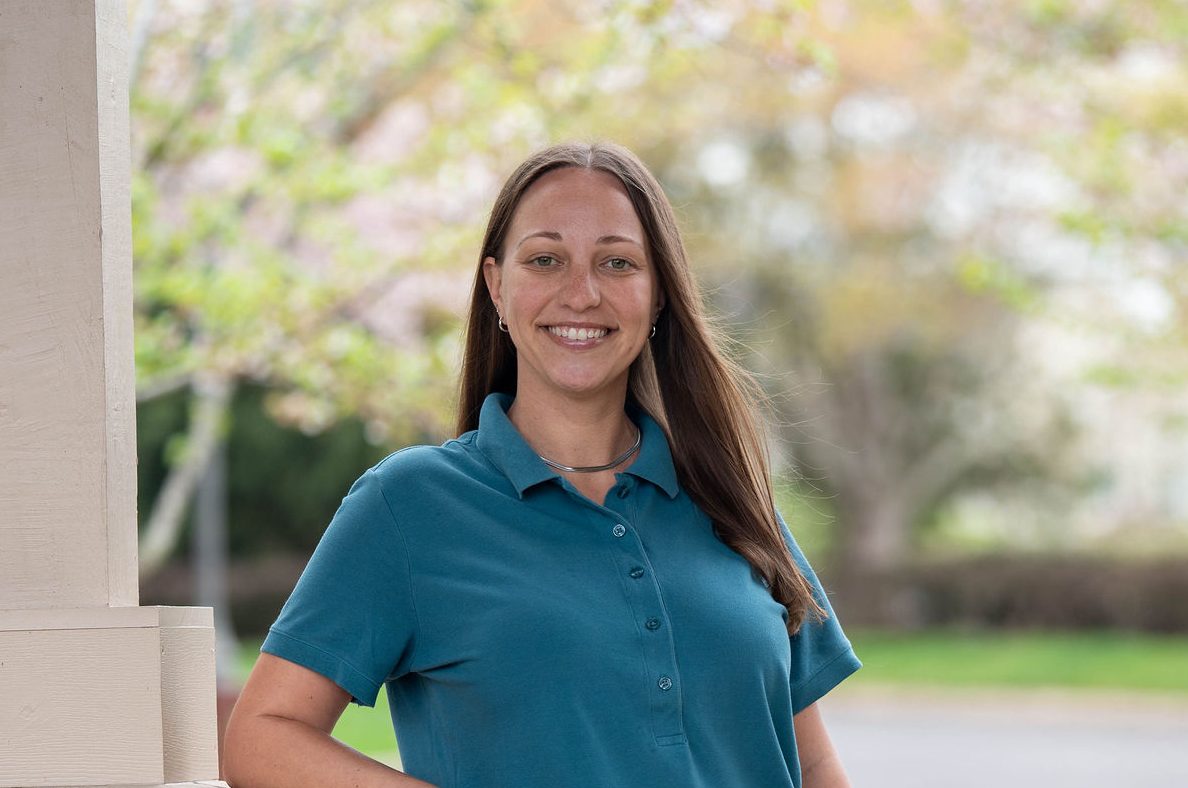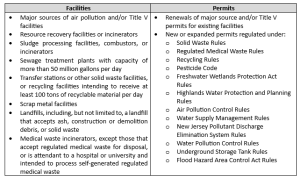New Jersey Environmental Justice Final Rule Effective April 17, 2023
Posted: May 3rd, 2023
Authors: Madison J.
In 2018, New Jersey Governor Phil Murphy issued Executive Order 23, ordering all state executive branch agencies to begin incorporating environmental justice (EJ) principles into their policies and procedures. The New Jersey Department of Environmental Protection (NJDEP) is one of those state agencies. In September 2020, Governor Phil Murphy signed into law New Jersey Statues Annotated (SA) 13:1S-157, or the Environmental Justice Law (EJ Rule).
On April 17, 2023, the final EJ Rule was published in the New Jersey Register and is now officially effective. Applicants with the types of facilities and permits listed in the table below will be required to submit an Environmental Justice Impact Statement (EJIS) with their permit application and participate in a 60-day public comment period if the existing or proposed facility is located in an overburdened community.
NJDEP EJ Rule Applicability

NJDEP defines overburdened community as one where:
- at least 35 percent of the households qualify as low-income households;
- at least 40 percent of the residents identify as minority or as members of a State recognized tribal community; or
- at least 40 percent of the households have limited English proficiency.
What are the implications of the EJ Rule?
If an existing or proposed facility or permit is determined to be subject to the EJ Rule, applicants must complete an initial screening and an EJIS. The initial screening is used to determine: if there are any adverse environmental and public health stressors in an overburdened community; what the combined stressor total is (the number of adverse stressors); and what the cumulative stressors are (a comparison of combined stressor total and a geographic point of comparison).
The EJIS requires the following:
- Executive summary;
- Detailed description of the nature of the surrounding community;
- Description of current and proposed operations;
- Summary of regulatory requirements, including a list of all Federal, State, and local permits;
- Initial screening (as described above);
- Assessment of both positive and negative impacts of the facility on each environmental and public health stressor identified in the overburdened community;
- Public participation plan;
- Demonstration to avoid a disproportionate impact in an overburdened community as a result of the facility; and
- If/how a proposed new facility will serve a public interest in the overburdened community.
Additionally, NJDEP’s fee for an EJIS review is set at an initial cost of $3,900.
What are the changes from the draft rule?
Changes between the draft rule and final rule vary from logistical to technical and included updating: the effective date to April 17, 2023; rule cross references; and uses of “feasible” versus “reasonable”. Three of the more detailed updates included:
- The draft rule contained an exemption to the requirements of the rule for projects that had a “compelling public interest” based on the economic benefits of the project. The economic benefit criterion of the compelling projects exemption has been removed in the final rule.
- Applicability language regarding census block groups with zero population [New Jersey A.C. 7:1C-2.1(e)]:
Where an existing or proposed facility in a block group that has zero population is located immediately adjacent to an overburdened community shall be subject to the requirements of this chapter and shall utilize the highest combined stressor total of any immediately adjacent overburdened community for the purposes of this chapter. For the purposes of this section, immediately adjacent means may include those communities separated by a street, road, or right-of-way.
- Department Review Requirements regarding issuing a decision [N.J.A.C. 7:1C-9.1(b)]:
b) In issuing a decision pursuant to N.J.A.C. 7:1C-9.2, the Department shall:
- Determine whether the facility will avoid a disproportionate impact to an overburdened community;
- Evaluate and determine the feasibility of conditions on the construction or operation of the facility in accordance with the requirements at N.J.A.C. 7:1C-5, 6, and 8 and such evaluation shall not be limited to those conditions proposed by the applicant; and
- Evaluate conditions on the construction or operation of the facility in accordance with the requirements at N.J.A.C. 7:1C-7, which evaluation shall not be limited to those conditions proposed by the applicant; and
- Impose conditions selected by the Department after being evaluated pursuant to (b)2 and 3 above, on the construction or operation of the facility.
If you are one of the affected facilities or permits, what should you do now?
The first step would be to determine if you are located in an overburdened community. To do so, use New Jersey’s Environmental Justice Mapping, Assessment, and Protection Tool, EJMAP. In addition to EJMAP, NJDEP provides the Division of Air Quality What’s In My Community? Tool for air quality related information and the NJ-Geo Web Tool for environmental information. ALL4 can assist you in your overburdened community determination.
If your facility is located in an overburdened community and meets the EJ Rule applicability criteria, be prepared for additional application and processing time. Engage your community, permit writers, consultants, and NJDEP EJ staff as early as possible. Reach out to ALL4 if you need assistance navigating these new requirements and planning how to address them.
If you have questions, need assistance planning for compliance with the NJDEP EJ Rule, or if you’d like to know what your state is doing around EJ, please contact Madison Jones at mjones@all4inc.com or (678) 293-9435. ALL4 also has additional resources available online, including our original coverage of the EJ Rule, NJDEP Proposes Environmental Justice Rule.

